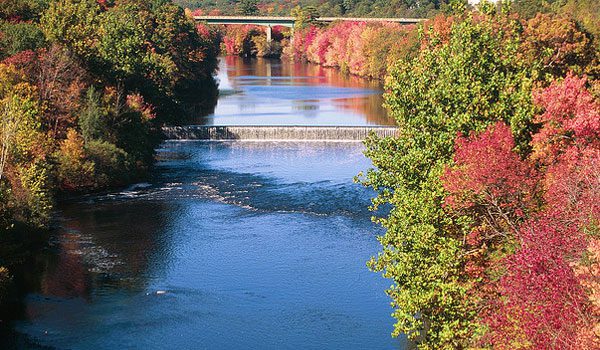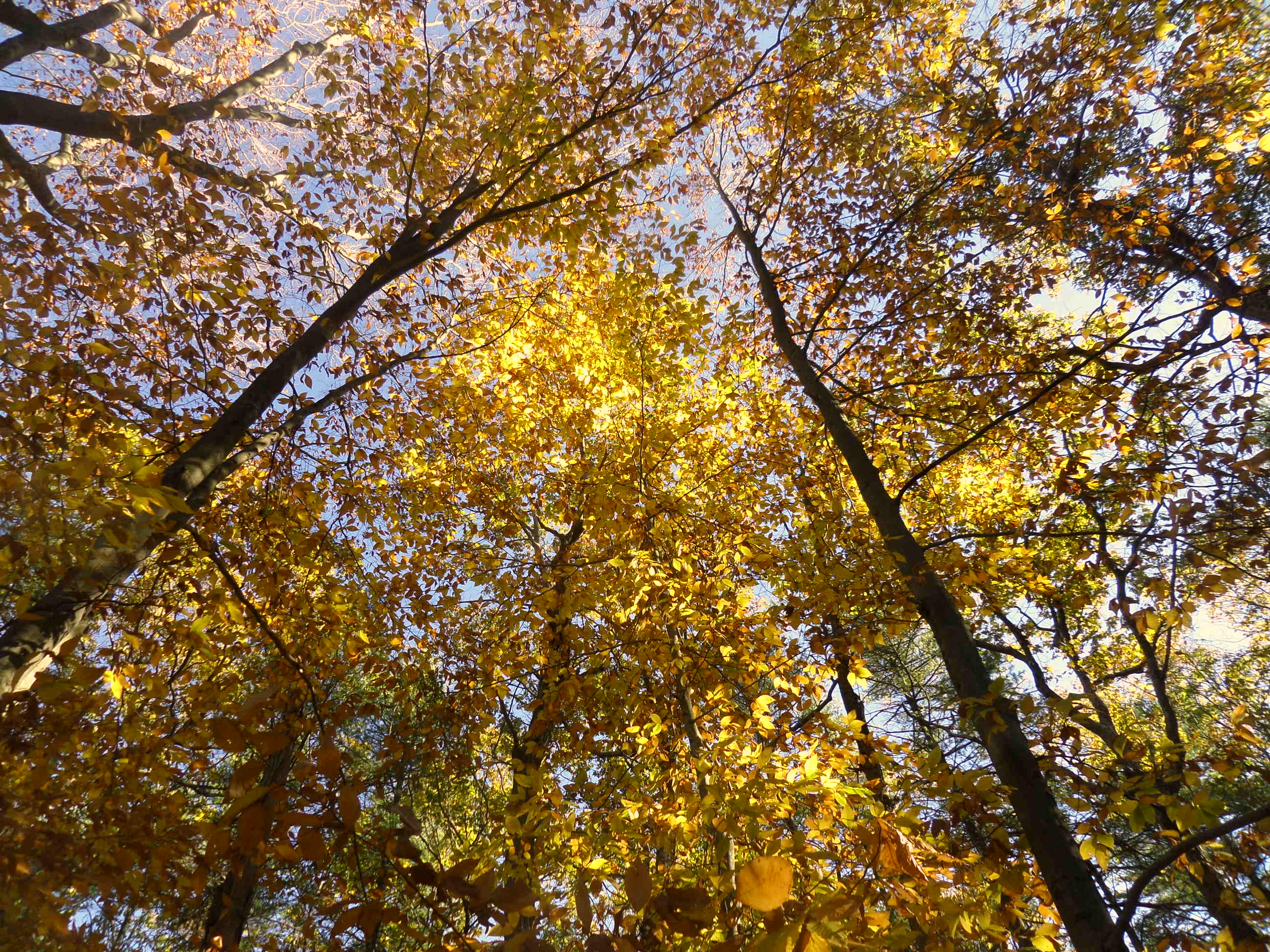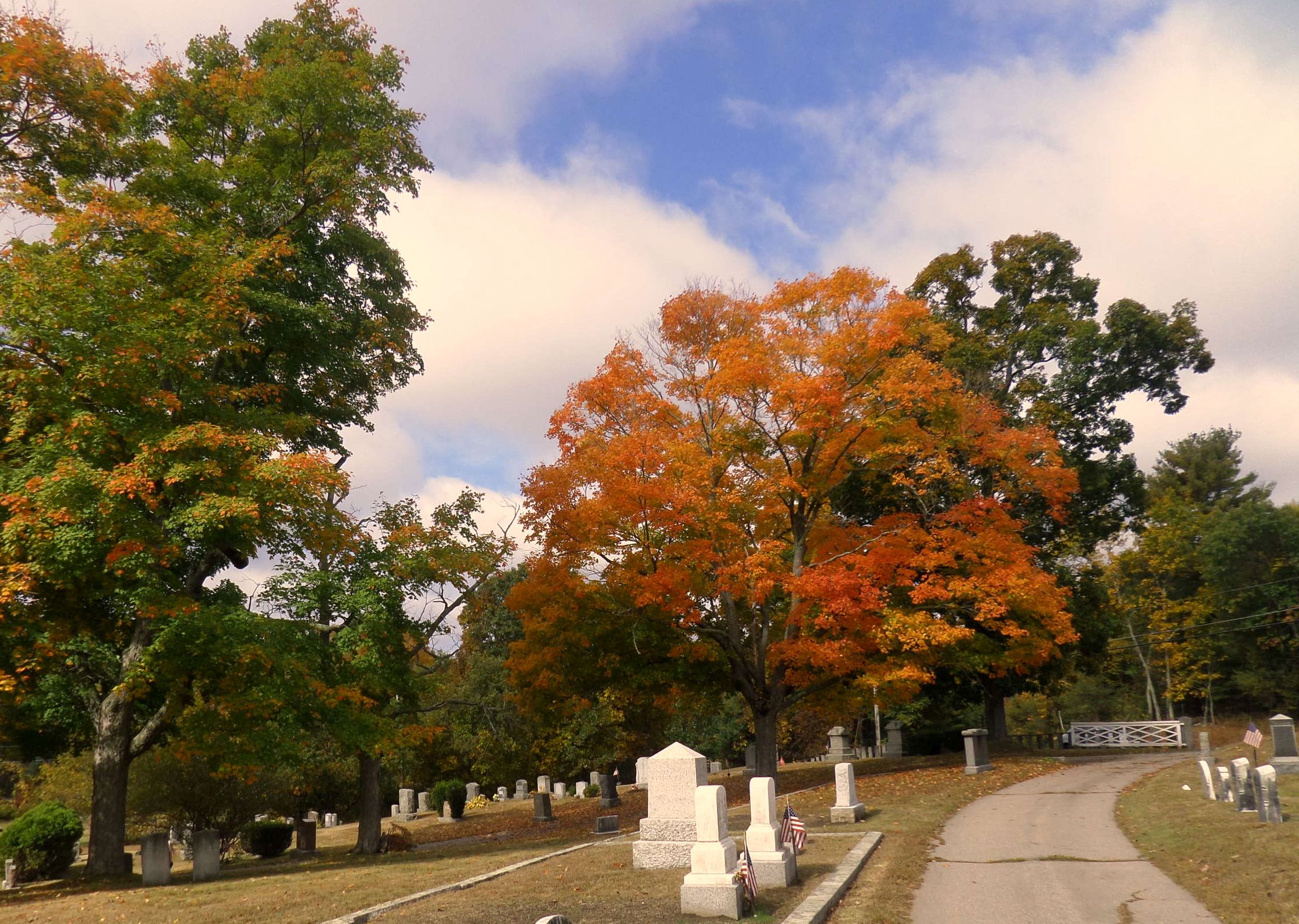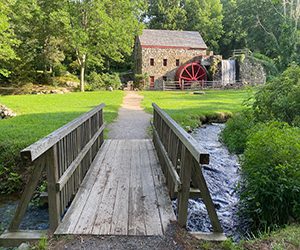Want to create an itinerary from this post?
Create a VisitWidget account and start creating your own sharable itineraries

For many of us, our goal in the fall is to find that picture-perfect view just like we saw in our favorite magazine. You know what I’m talking about: glowing, fiery orange sugar maples on a town common, white church strategically placed amidst the trees, the hillside backdrop aglow. The reality that most of us see? A whole lot of color interspersed among trees that aren’t quite with the program yet. Pine trees disrupting the show, while other deciduous trees steadfastly remain on their own time schedule. Trees that have partly “turned” while the rest of the tree stubbornly remains green. And just when we think we’ve found a perfect spot, the rains of autumn arrive, washing all the color away overnight. To find those great spots, it takes a little practice—perhaps even a small amount of “detecting.”

The trails near where I live in Massachusetts all offer something of interest, but autumn is when nature truly pulls out all the stops. In the process of creating two walking guides to very local trails in south central Massachusetts, I’ve taken photos along each of these trails, sharing with others the stunning beauty that can be found on these local paths. Last fall I made a special effort to capture with my camera some of fall’s colors.
And that’s when I realized how very fleeting indeed is this season that New England is so well-known for. Lasting just a few weeks, the season can be dramatically shortened with one heavy rainstorm. And yet…even when all the other trees have dropped their leaves in one fell whommp! the oaks hold on. “Eh, it’s just oaks,” you might say. Yes, oak trees will cling to their leaves, some all the way till the following spring when new growth finally succeeds in pushing the old leaves out of the way. But sometimes, when the light is right, the oaks will glow with a bronze glory that nearly outshines their sugar maple cousins, the prima donnas of the foliage season.

Some basic things to keep in mind to find fantastic foliage around the corner from where you live:
- Learn where the walking trails are near your local rivers, streams and ponds. Many of these bodies of water have walking trails that are great spots to visit year round; along the Blackstone River in Uxbridge, Northbridge, Millville and Blackstone; next to the Upper Charles River in Milford, Bellingham, Medway, Millis and Medfield and Sherborn; the Neponset River in Walpole: the Sudbury River in Framingham. Mill Pond in Westborough offers a great walk; or try walking along the north shore of Lake Whitehall in Hopkinton. Many towns have small ponds that are great spots to look for foliage. By visiting walking trails prior to foliage season, you’ll learn what types of trees are along the trail, where there are great views, and familiarize yourself with those picture-perfect spots. As the trees begin to turn, visit these trails first, since often trees along waterways will drop their leaves first.
- Start learning to recognize common trees, shrubs and plants. Many plants besides the iconic maples and beeches provide colorful displays. Bringing samples home for identification can help in this learning process, but be forewarned—poison ivy joins the autumnal party, but you’ll be very sorry if you bring these colorful leaves back home with you!
- Search out beech groves, (those trees with smooth, gray bark that people seem to revel in writing their initials on) like the ones at Hopedale Parklands, or Moosehill Audubon in Sharon, and remember where these groves are so you can revisit at the height of the season. As you stroll among the beech trees, be sure to look up—in the sunlight, the yellow leaves positively glow.
- Visit spots with views. South Central Massachusetts has many easy walking trails, but not as many overlooks as you’ll find in New Hampshire or Vermont. Plan to visit places like Joe’s Rock in Wrentham, Lookout Rock in Northbridge; Noanet Peak at Noanet Woods in Dover; Rocky Narrows in Sherborn; and the overlook on the Bluff trail at Moosehill Audubon, Sharon, just to name a few. These all offer easy walks to sweeping vistas of the New England countryside.
- Get acquainted with your local cemeteries. Every New England community has cemeteries, old and newer. Many of these places, set aside for remembrance, are ideal for foliage viewing. No power lines get in the way of the view, the “neighbors” are quiet, and many graveyards have mature sugar maples that offer shade in the summer and a glorious autumn display in the fall. Many cemeteries have paved walkways that make for easy walking. Check with your local cemeteries, or historical committees to see if they have restrictions, limit parking, or have any rules that would limit your ability to park nearby and explore.
- Practice using your camera prior to autumn. Foliage looks different at different times of the day. Visit your favorite spots at various times; early morning, mid day, and late afternoon. Many overlooks face only one direction. Depending on the time of day, you may see very little if the sun is in your eyes, and too much light it will wash out any color.

And if you can’t get out on the trail? Simply enjoy driving along back roads, which often have sugar maples, ash trees, birch, and other species along the way just waiting for you to come by to appreciate the show. Autumn is a wonderful time in New England. People travel from around the globe to take part in this yearly event. For those of us lucky enough to live right nearby, be sure to enjoy it while you can, and remember to look nearby. With a little practice, you can become a foliage detective, discovering foliage in all the right places.
TOPICS: fall foliage, massachusetts foliage
Want to create an itinerary from this post?
Create a VisitWidget account and start creating your own sharable itineraries



